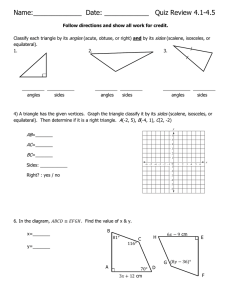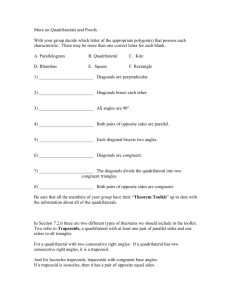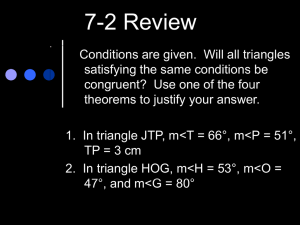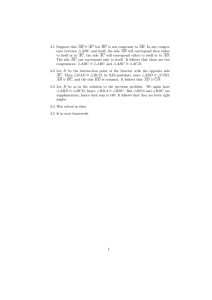1. If two lines lie in the same plane, and... then they are parallel.
advertisement
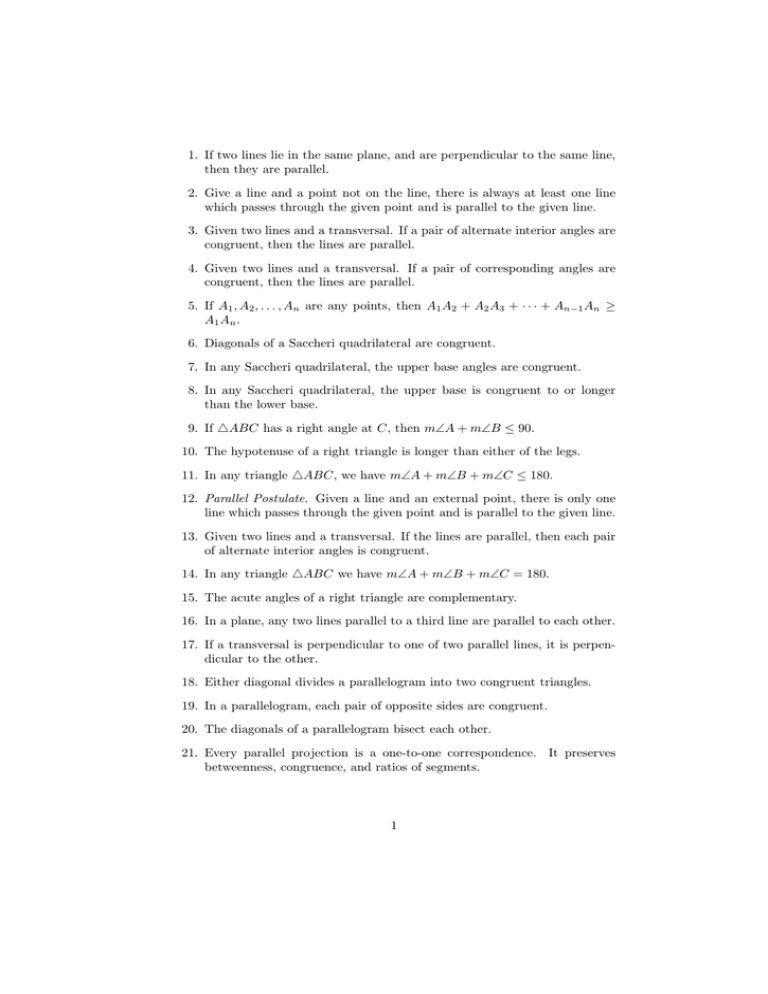
1. If two lines lie in the same plane, and are perpendicular to the same line, then they are parallel. 2. Give a line and a point not on the line, there is always at least one line which passes through the given point and is parallel to the given line. 3. Given two lines and a transversal. If a pair of alternate interior angles are congruent, then the lines are parallel. 4. Given two lines and a transversal. If a pair of corresponding angles are congruent, then the lines are parallel. 5. If A1 , A2 , . . . , An are any points, then A1 A2 + A2 A3 + · · · + An−1 An ≥ A1 An . 6. Diagonals of a Saccheri quadrilateral are congruent. 7. In any Saccheri quadrilateral, the upper base angles are congruent. 8. In any Saccheri quadrilateral, the upper base is congruent to or longer than the lower base. 9. If 4ABC has a right angle at C, then m∠A + m∠B ≤ 90. 10. The hypotenuse of a right triangle is longer than either of the legs. 11. In any triangle 4ABC, we have m∠A + m∠B + m∠C ≤ 180. 12. Parallel Postulate. Given a line and an external point, there is only one line which passes through the given point and is parallel to the given line. 13. Given two lines and a transversal. If the lines are parallel, then each pair of alternate interior angles is congruent. 14. In any triangle 4ABC we have m∠A + m∠B + m∠C = 180. 15. The acute angles of a right triangle are complementary. 16. In a plane, any two lines parallel to a third line are parallel to each other. 17. If a transversal is perpendicular to one of two parallel lines, it is perpendicular to the other. 18. Either diagonal divides a parallelogram into two congruent triangles. 19. In a parallelogram, each pair of opposite sides are congruent. 20. The diagonals of a parallelogram bisect each other. 21. Every parallel projection is a one-to-one correspondence. It preserves betweenness, congruence, and ratios of segments. 1

